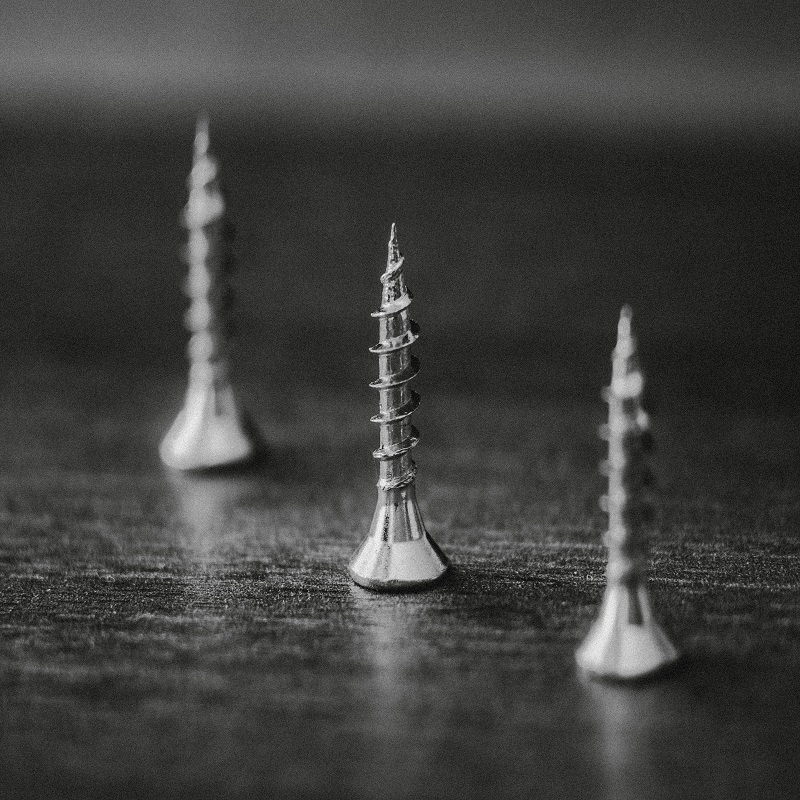
There is no doubt that a decking screw is an essential material when making a deck. However, with so many screws available in the market today, it can be tricky to differentiate a decking screw from a wooden screw accurately. But then, you should know that all screws are used to fasten wooden timbres or materials together, and both decking and regular wooden screws perform similar tasks.
Still, the difference between the two is that a wooden screw features a head, a drive, a thread, a tip, and a long shank, while a decking screw contains all the features mentioned earlier but comes with a smaller length of the shank. By the way, you should know that the shank is a smooth cylindrical surface between the screw’s head and the thread, and it reduces the risk of torsion and the snapping or splitting of the timber during installation.
It Is already established that a decking screw has a shank of a smaller length than a wooden screw as it ensures maximum grip of the timber, thus, making a more sturdy fastener and durability of the structure long after installment. Plus, decking screws suit the several designs created by manufacturers to solve the torsion issue, making it a much better choice than wooden screws. This is especially for your decking projects.
Now that we have disclosed what a decking screw is and Its difference from a wooden screw, let us now discuss how you can identify the decking screw in the easiest ways. Of course, this is essential because with so many manufacturers designing unique decking screws, it can be challenging to pick the right decking screw for your needs. This article will discuss various aspects of a decking screw to make identification and selection easier for you. Surely, you want to read till the end for all the excitement and eye-opening information we have for you here.
Choosing a Decking Screw
When picking a decking screw, there are three aspects to put into consideration, which are:
- Head profile
- Self-drilling point
- Corrosion resistance
Head Profile
The head profile deals with the screw’s head, an important aspect you should consider when picking a screw. It would help if you considered how it would look on the timber because it will be visible when drilled into timber; thus, it contributes to the aesthetics of the wooden structure. Decking screws are available in different colors with heads of different shapes, so you must consider if the decking screw you purchase looks visually pleasing on the structure before the installation begins.
The next thing you should consider about the head of the decking screw is the size. Why? The size is more important than the outward look because the head of the screw stops the wood from popping out long after installation. Cupping is one of the problems of timber, which is caused by moisture accumulating in the timber over time, resulting in the uneven expansion of the timber to a U-bent shape affecting the durability of the structure; the bigger the size of the head, the lesser the chance of cupping. This is because the head, due to its enormous size, ensures the wood is fastened firmly together, and no matter the tension resulting from moisture content, the timber cannot cup, ensuring the durability of the wooden structure. Decking screws are available in sizes ranging from 6g to 14g, so the bigger the thickness of the board, the bigger the head size of the decking screw that should be used.
Self Drilling Point
This aspect has to do with the other parts of the decking screw, the tip, thread, and shank, their design, and what type of wood it can be used on, whether hardwood or softwood. It is much easier than choosing using head profiles. There are two types of points manufactured for decking screws, there are:
- Type 17 points: This is a type of timber self-drill point made in a sharply pointed design with a cutout flute which helps to capture and remove waste timber, enabling a self-drilling type function. It is very effective as it does not over-drill, gives a firm grip on the timbre, and can be used for softwood and hardwood.
- Self-drilling Decking Screw Point: This type is straightforward to use as it bores out a lot more holes than the type 17 point, ensuring there is less timber for the thread to grip, reducing torsion and the risk of snapping during installation, and leaves a giant-sized hole for the head of the screw to sink into. This self-drilling point is better used on hardwood than softwood as it does not require maximum thread gripping.
Corrosion Resistance
Corrosion resistance has to do with the rusting of the decking screw due to exposure to air moisture; the corrosion resistance of the decking screw highly depends on the type of material it is made of, which is why decking screw materials are classified into four levels of corrosion resistance:
- Class 3 Hot Dip Galvanized: These are barely sold but are strong decking screws due to their carbon steel base. However, they are highly prone to corrosion and should only be used in non-corrosive environments.
- Trademark Coatings: These are better performers than the Hot Dip Galvanized in terms of corrosion resistance as it is coated with ceramics or Rupert or a mix of both and carbon steel, so it is also strong torsionally but will serve better in a non-corrosive environment.
- 304-Grade Stainless: This is the most common level of decking screws available in the market as it has excellent corrosion resistance and still retains some carbon steel for strength; plus, it can be used in any environment, except very corrosive environments.
- 316 Marine Grade Stainless: This is the best corrosion-resistant level of decking screws but barely contains any carbon steel making it weak torsionally; it should only be used if you live in a very corrosive environment.
Our Most Popular Pioneer Decking Styles
Pioneer decking sets a new standard in composite decking with its unmatched realism. Be sure to view our most popular Pioneer decking styles:- 5.45m Spotted Gum Eva-Last Pioneer Composite Decking
- 5.45m Blackbutt Eva-Last Pioneer Composite Decking
Conclusion
When picking a decking screw, it is essential to consider various factors, and thankfully, we have discussed some of them above. Some of the factors we discussed include the exterior aesthetics to the size of the head when reducing the risk of cupping, the self-drilling point to reduce the risk of snapping, and finally, the level of corrosiveness of the environment you live in.
Indeed, checking all these factors before purchasing will help you to ensure the durability of the wooden structure after installation. It also provides the right quality appeal you want for your project. Surely, the tips and points we have discussed in this article will provide a sufficient guide for your perfect choice of decking screws. You definitely should consider them when you go to purchase your screws.
Our decking screws in Brisbane are second to none, and if you have any queries regarding them, don’t hesitate to give us a call. Our top priority is to ensure that you are completely satisfied with the results of your project, and to that end, we offer premium materials at competitive costs and offer expert service.
EZY Decking is Brisbane’s go-to supplier of high-quality, simple-to-use, countersink flush and straight screws for composite decking and other wood outdoor projects. The result is a deck that looks great and can be used without worry by anyone in the family or any guests.





